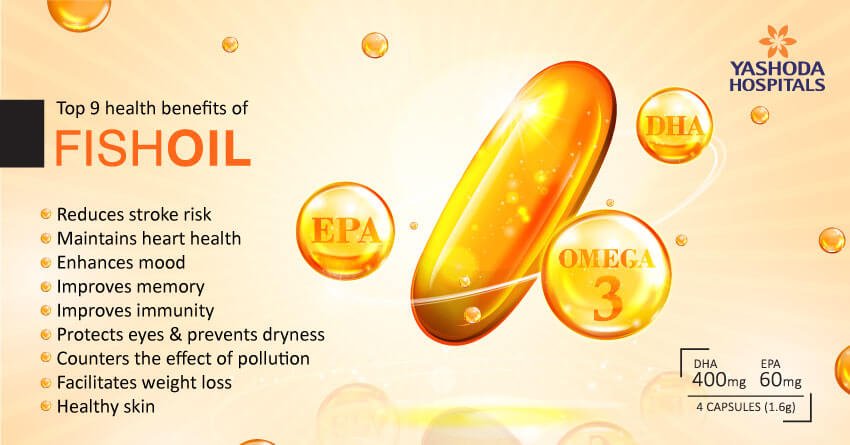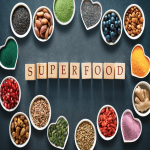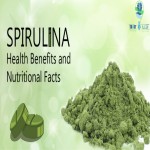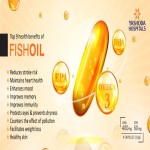Omega-3 fatty acids and brain health
What are omega 3 fatty acids?
Omega-3 fatty acids are polyunsaturated fats that are responsible for fish oil benefits for brain and mental health .
Fish oil contains two types of omega-3 fatty acids :
- Eicosapentaenoic acid EPA
- Docosahexaenoic acid DHA
These fatty acids that the cell membranes are made up of and have powerful anti-inflammatory functions within the body. It is known for its important role in heart health.
Most individuals don’t eat enough fish, so they fail to get enough EPA and DHA in their diets. Fish oil supplements may be a suitable solution to get the health benefits of omega-3s.
Body can make EPA and DHA from another omega-3 called alpha-linolenic acid (ALA). We find ALA in some food sources, such as walnuts, flaxseeds, chia seeds, canola oil, soybeans, and soybean oil.
But the conversion of ALA to EPA and DHA is not very efficient, less than 10% of the amount of consumed ALA is converted to EPA or DHA.
Omega 3 during pregnancy:
It is recommended that pregnant women consume 300 mg of omega-3 fatty acid DHA per day, but in fact most of them consume only about 80 mg per day.
DHA is important for the development of the foetal central nervous system (eg: brain and eye) and is the most important polyunsaturated fatty acid (PUFA) in the central nervous system. DHA buildup happens during the last three months before birth and also during the first six to 10 months after birth
Omega 3 in children:
Babies born premature miss out a lot of the DHA they get from their mother. Also, children who are fed formula milk do not get enough omega-3 DHA.
Omega 3 for adults:
Neurotransmitters in brain are affected by the decrease of DHA such as acetylcholine, dopamine, serotonin, norepinephrine, glutamate, and gamma-aminobutyric acid (GABA). Many of these neurotransmitters are very important in prevention and treatment of depression and dementia. So it is the reason for the benefits of EPA/DHA in these conditions.
Omega 3 and ADHD
Children and adults with ADHD have been found to have low levels of long-chain omega-3s in cell membranes, accompanied with behaviour and learning problems such as hyperactivity, impulsivity, anxiety, tantrums and sleep difficulties.
Providing omega-3-fortified foods or supplements to children (containing DHA and EPA) improves ADHD symptoms.
Omega 3 and dyslexia
Dyslexia, or developmental coordination disorder (DCD), is a specific impairment of motor function and can affect about 5% of children. Children with this disorder have educational, behavioral and psychosocial problems.
When an omega-3 supplement is taken for 3 months of treatment, significant benefits are found in reading, spelling and behavior.
Thus children with dyslexia or DCD greatly improve in reading, spelling and behavior when supplemental marine omega-3 is provided.
Omega 3 and Autism spectrum disorder:
Children with autism spectrum disorder (ASD) have been observed to have lower levels of DHA and lower total plasma levels of omega-3 fatty acids.
Omega-3 fatty acid deficiency is found in nearly 100% of ASD cases.
It was found that 90% of patients with pervasive developmental disorders (PDD) had decreased levels of EPA/DHA in the membranes of red blood cells.
Thus, taking long-chain omega-3 supplements may help ASD autism spectrum disorder and PDD pervasive developmental disorders patients.
Why is the consumption of omega-3 fatty acids low?
As a result of increased consumption of omega-6 seed oils, there was a shortening of omega-3 consumption in the diet.
Marine omega-3s have been part of our ancestors' diet for millions of years. It is estimated that during the Paleolithic, the intake of marine eicosapentaenoic acid (EPA) and docosahexaenoic acid (DHA) was about 660-14,250 mg/day compared to about 100-200 mg/day today.
Furthermore, the ratio of omega 6:3 has increased from about 4:1 in our hunter-gatherer ancestors to 20:1 today.
Omega-6 intake has mainly increased due to consumption of omega-6-rich seed oils, such as soybean, corn and safflower oils, the latter two having an omega-6/3 ratio of approximately 60:1 and 77:1, respectively.
Increased omega-6 intake is associated with an increased risk of depression and anxiety disorders.
High omega 6:3 (especially if it's above 9:1) is associated with an increased risk of postpartum depression.
Excess omega-6:3 may be a contributing factor to the emergence of mood disorders, including depression, in the Western world.
Depression , omega-3 and omega-6
Eating more marine omega-3s is linked to a lower risk of depression.
Countries that consume more fish and seafood have lower rates of depression, lower risk of suicidal ideation, and better mental health.
Low levels of eicosapentaenoic acid (EPA) and docosahexaenoic acid (DHA) have been documented in the blood and adipose tissue of patients with depression.
People with depression were observed to have lower levels of EPA and DHA and higher levels of arachidonic acid.
In addition, omega-6 : omega-3 ratios are higher compared to those without depression.
Decreased levels of EPA and DHA have also been observed in postpartum depression, social anxiety disorder, and bipolar disorder.
Also, omega-3 levels in red blood cells and plasma of patients with clinical depression were found to be lower, with a deficit of DHA found in brain tissue for those with major depressive disorder.
Foods that are very high in omega 3
Many mainstream health organisations recommend that healthy adults consume at least 250-500 mg of EPA and DHA daily. You can reach this amount by eating two servings of fatty fish per week.
You can get large amounts of omega-3 fats from fatty fish, algae, and many plant foods that are rich in fats.
Food rich in omega-3 in gms per serving:
mackerel
Small fatty fish. (4580 mg Omega-3 in 100 grams)
salmon
One of the most nutrient-dense foods on the planet. (2150 mg per 100 mg)
Cod liver oil
Mostly as a supplement rather than a food. (2,438 mg per tablespoon)
Herring
a medium-sized oily fish (2150 mg per 100 g)
Oysters
are one of the most nutritious foods you can eat.
Oysters contain more zinc than any other food on the planet (329 mg per 100 grams).
Sardines
very small oily fish (1463 mg per 100 g)
anchovies
Small oily fish (411 mg per 100 g)
caviar fish eggs, or roe (1046 mg per serving)
Contains food containing ALA which can be changed to DHA
Flaxseed (2350 mg ALA per tablespoon)
Chia Seeds (5050 ALAmg Per 28gm
Walnuts (2570 mg ALA per 28 g)









